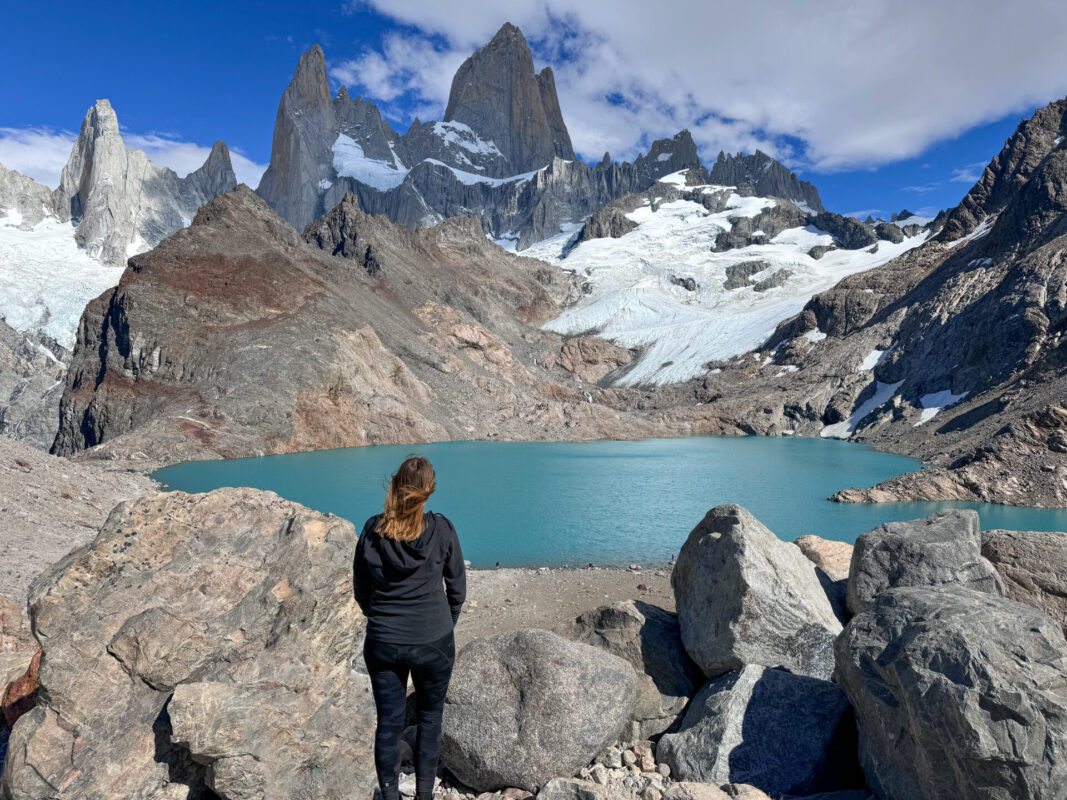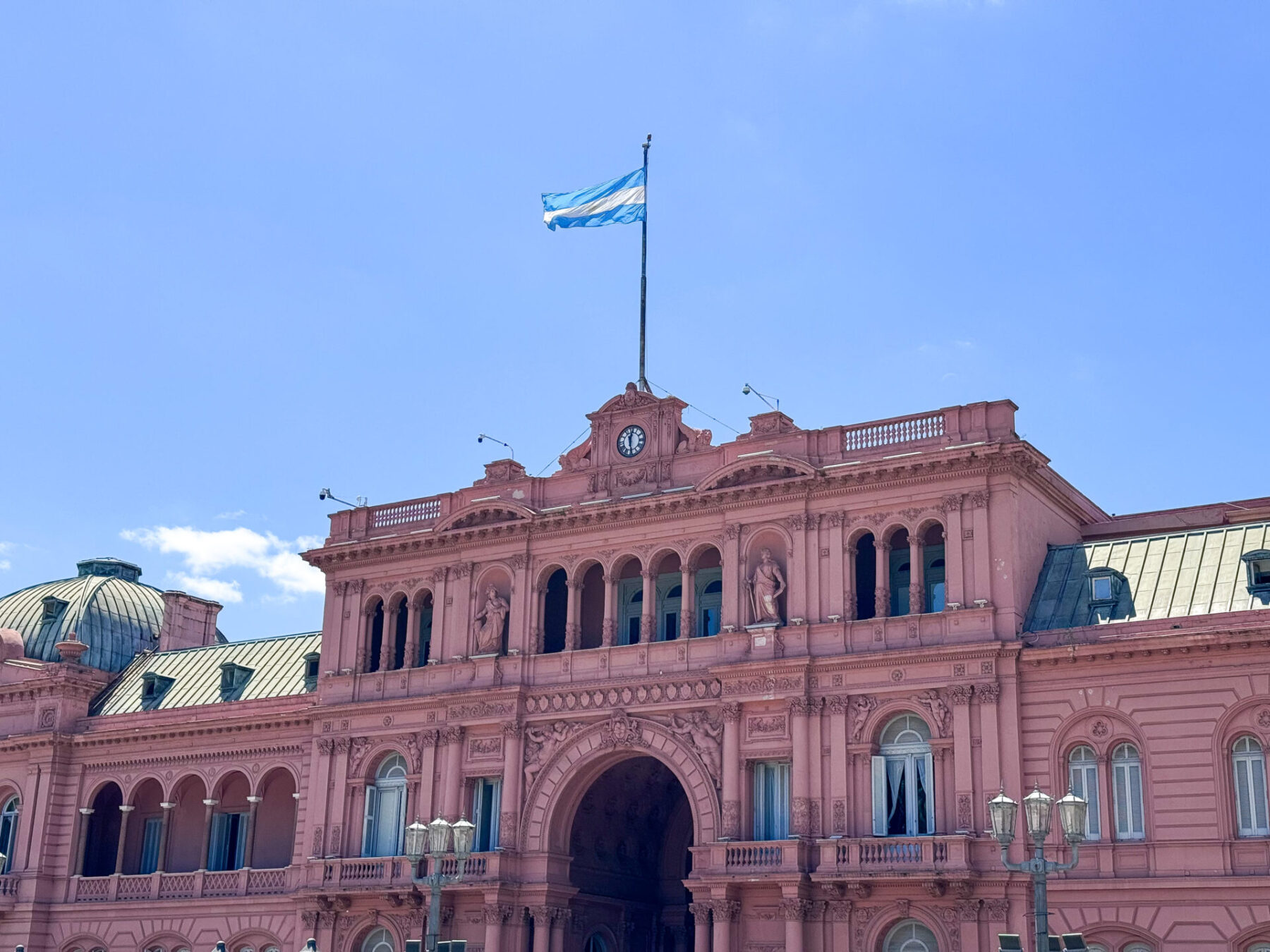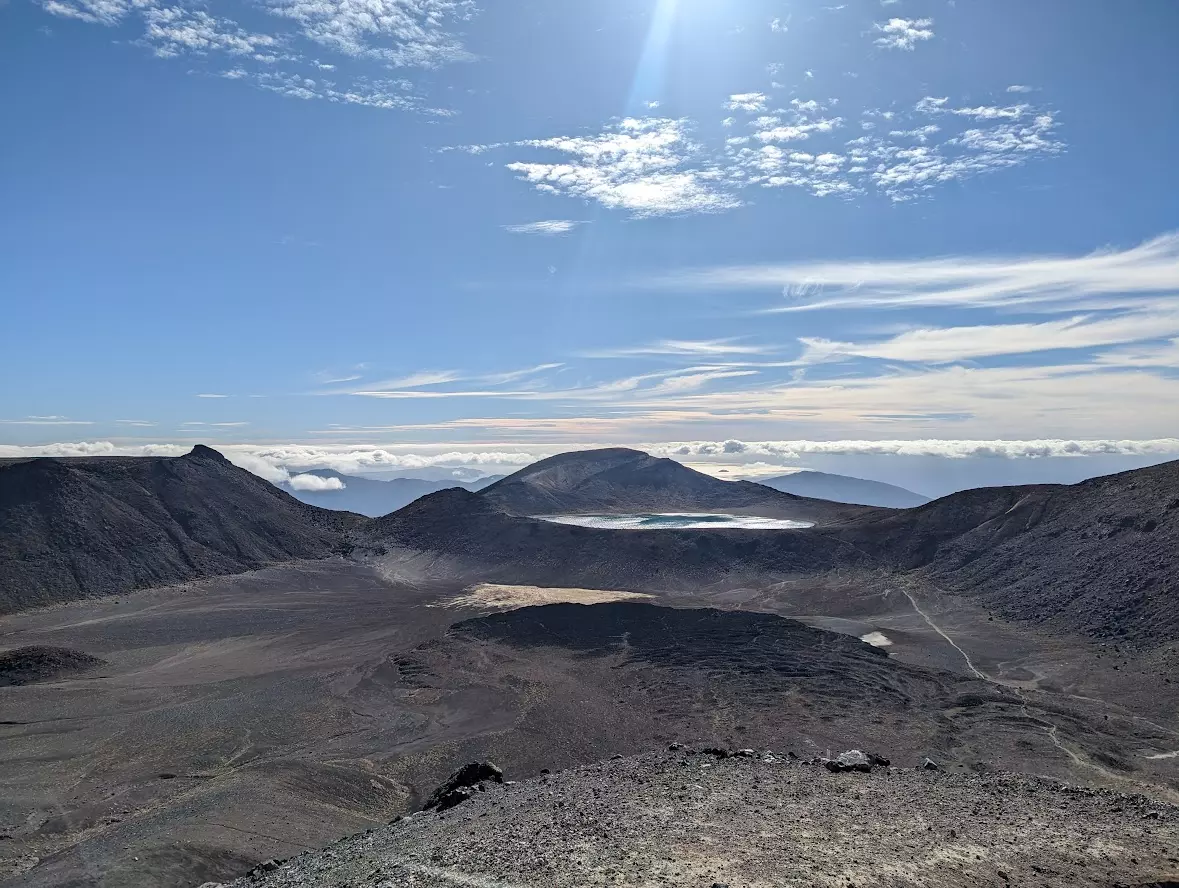Are you planning a trip to Patagonia but have no idea what to pack? Don’t worry, I’m here to help. Packing for any trip can have its challenges, but packing for a remote destination that can experience four seasons in a day can be even harder.
Patagonia covers a vast area in Chile and Argentina. Despite attracting hundreds of thousands of tourists every year, the wild region is known for its extreme weather and unpredictable conditions. This can make packing for a trip to Patagonia a little bit more difficult than a regular destination, especially if you plan to go hiking or camping.
In this Patagonia packing list, I’ve shared all the essential items, including walking boots, a waterproof coat and a suitable day pack. I’ve also listed some less common items that may come in handy depending on your plans.
Whether you’re heading to Argentina’s hiking capital or taking on the famous W Trek in Torres del Paine, I hope you find this packing list for your Patagonia adventure useful.
What to pack for Patagonia: the essentials
Let’s start with some essential packing items for visiting Patagonia. The list is tailored towards those who plan to go hiking, but it may be useful for anyone visiting the area.
Hiking boots
Let’s start my Patagonia packing list with an important one – a good pair of hiking boots. Proper hiking boots are a sensible idea if you’re planning any sort of significant hike in Patagonia.
Many of the hikes have uneven terrain, with loose ground and sometimes even scrambling required. This is true even for popular hikes such as Laguna de Los Tres and the W Trek.
Choosing the right footwear for longer hikes is so important. It could be the difference between a comfortable hike and one that’s unsafe and painful.
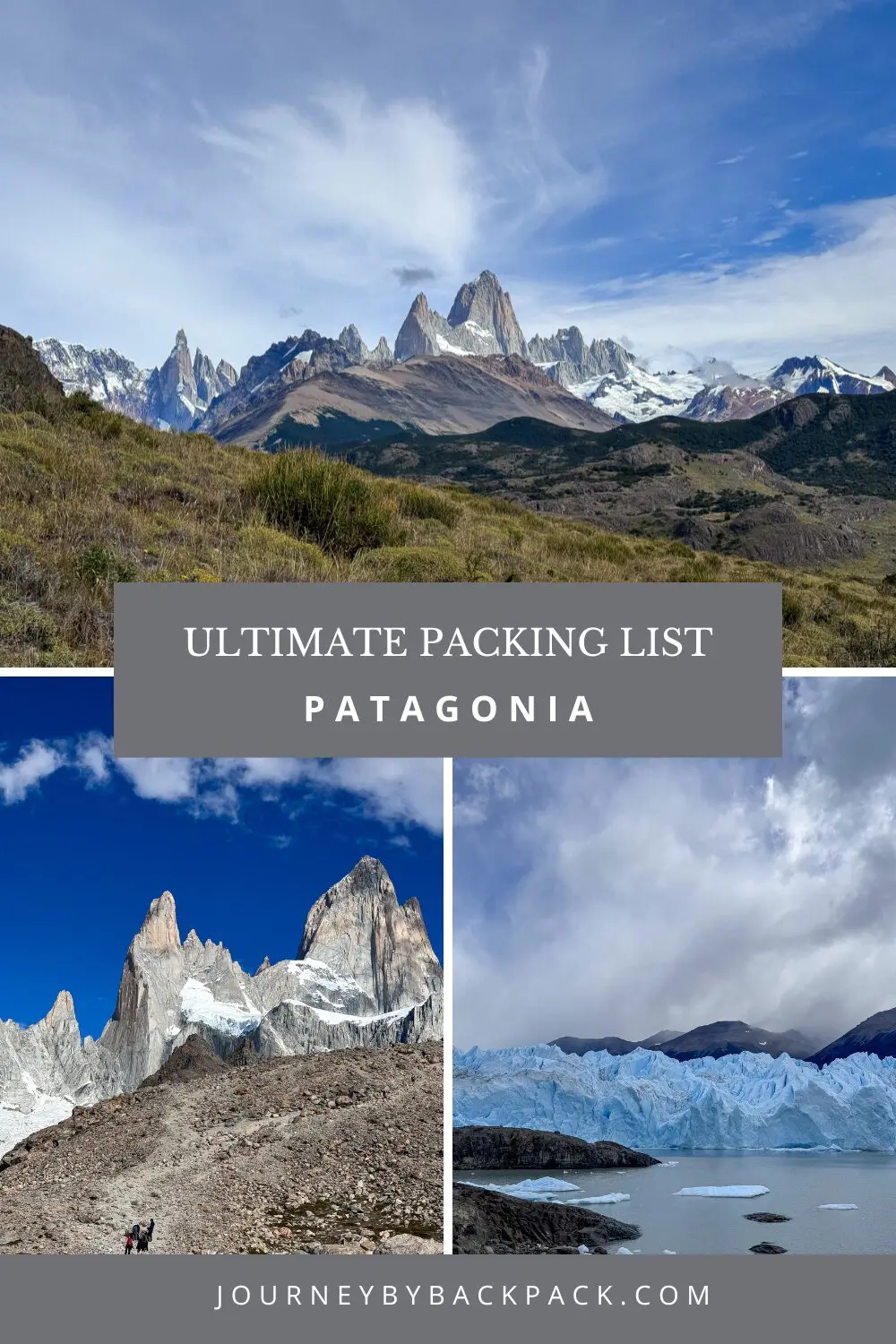
When it comes to hiking in Patagonia, I’d personally say ankle support is essential. Many of the hikes I did had very steep and rocky sections with loose ground. There were several occasions when I slipped down, and I’m glad I had my boots with ankle support.
Choosing waterproof hiking boots is also a good option. This means if it rains or you find yourself in a muddy area, your feet will have some extra protection.
Tip: if you’re planning to buy new hiking boots, remember to break them in before going on a long hike.
Waterproof jacket
The mountains of Patagonia are known for their rainy days, so carrying a good quality rain jacket is essential. Spending the entire day soaking wet in the cold and wind while hiking would not be enjoyable.
Most waterproof jackets are also windproof, which helps to keep the chill from the notoriously strong wind in Patagonia away.
You can buy packable waterproof jackets which are perfect for layering and putting in a small day pack.
Sun protection
I can’t say this enough – the sun in Patagonia is so strong, especially in the summer months. Even on cloudy days, I managed to burn a little. Packing sun protection is an absolute must for any trip to Patagonia, whether you plan to hike or not.
On sunny days, a sun hat and sunglasses will come in handy. On cloudy days, I’d still suggest wearing SPF to protect your skin. You could also consider purchasing a long-sleeved top which will help to protect your arms from the sun.
Suitable hiking clothes
This might sound like an obvious one, but if you plan to go hiking in Patagonia, make sure you have suitable hiking clothes.
What do I mean by this? Well, for starters, I don’t mean jeans or fancy clothes. I saw someone on the Fitz Roy (Laguna de Los Tres) trek wearing jeans and Converse; they did not look happy!
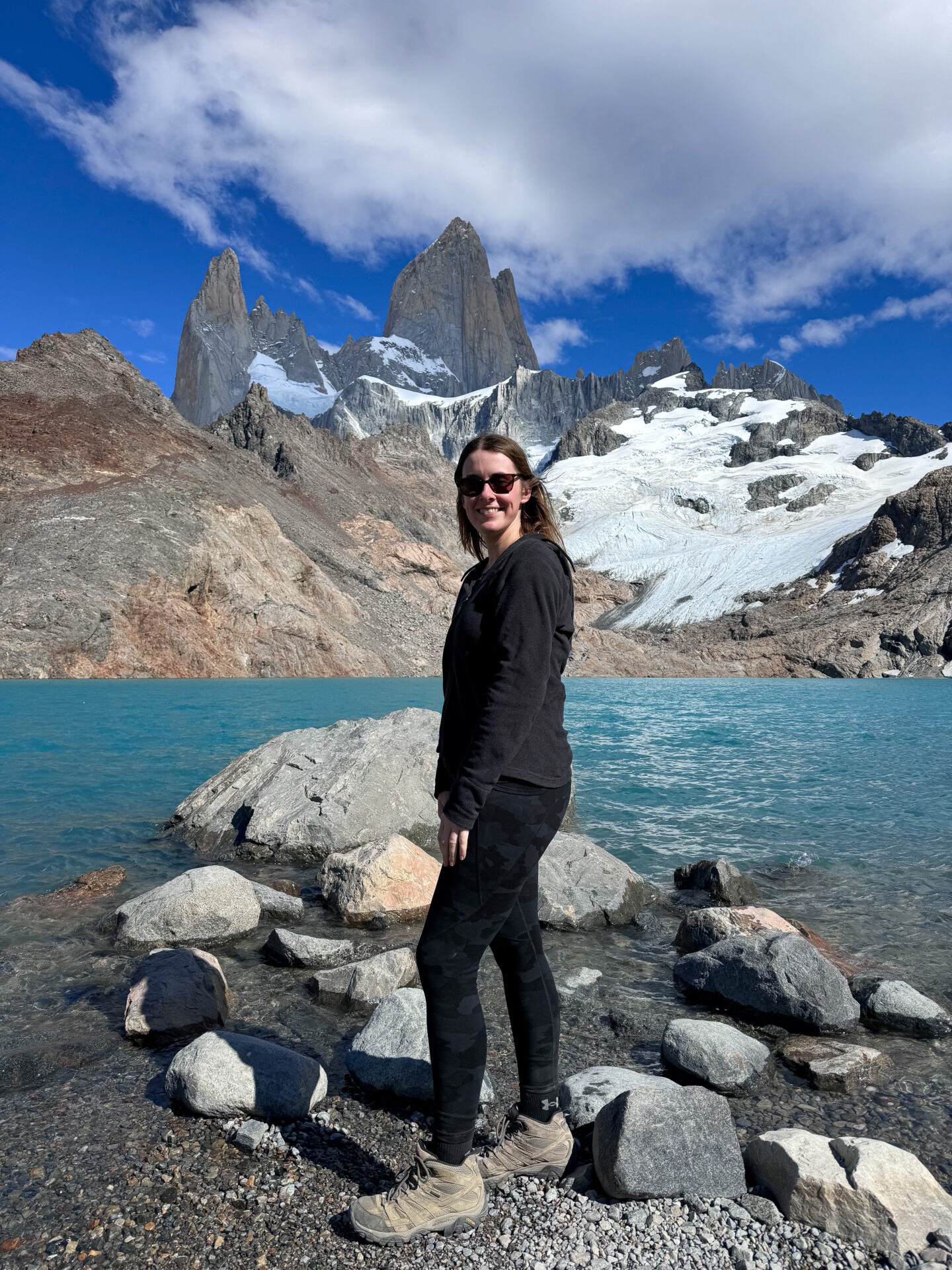
Hiking in Patagonia isn’t something to be underestimated. This remote region is known for its wild and unpredictable weather. It’s important to be prepared for your long hikes and to wear clothes that are comfortable for hiking. Wearing jeans for 8 hours on an intense hiking trail is not going to be comfortable.
Here are a few essential hiking clothes that haven’t been mentioned so far:
- Walking trousers or leggings (ones that will keep you warm and protect you from the elements)
- Shorts
- Thermal top
- Sports bra
- Long-sleeved shirts
- Fleece
- Sports t-shirt
- Down coat
You don’t need to spend hundreds on new gear, but it’s worth having a few good-quality items.
Layers, layers and more layers
Following the above point, the best way to pack for Patagonia is… layers, layers, and more layers of clothing.
Hiking in a thick jacket or sweatshirt might sound great in principle, but if you get hot, you’ll need to take it off (and carry it). Then, you’ll get cold… but be too hot to put the thick jacket back on. This is where layering saves the day.
Opt for thin items that can be layered on top of each other. Think of a base layer, a warmer layer, a thin fleece and a down coat. Most of these items pack down very small, so it’s easy to carry them if you need to take them off. Likewise, it’s easy to throw another one on if you get too cold.
Patagonia is renowned for its strong winds, and even on sunny days, you might need an extra layer.
Reusable water bottle
Most of the tap water in Patagonia is drinkable (but it’s always a good idea to check with the locals when you arrive). Carrying a reusable water bottle will not only save you money but also reduce plastic waste.
Many hikes also have natural water sources from glaciers, which make it safe to refill your water bottle or water bladder.
Tip: If you’re unsure about drinking the water, consider purchasing a Lifestraw. I did this for my recent trip to Nepal, and I don’t have a bad word to say. I had no issues whatsoever. The bottles contain a water filter that gets rid of all the nasty bugs and parasites.
Day pack
If you’re planning to do long hikes in Patagonia, you’ll need a suitable day bag to carry all of your hiking essentials. This includes items mentioned in this packing list such as a waterproof, layers and of course, your food and drink.
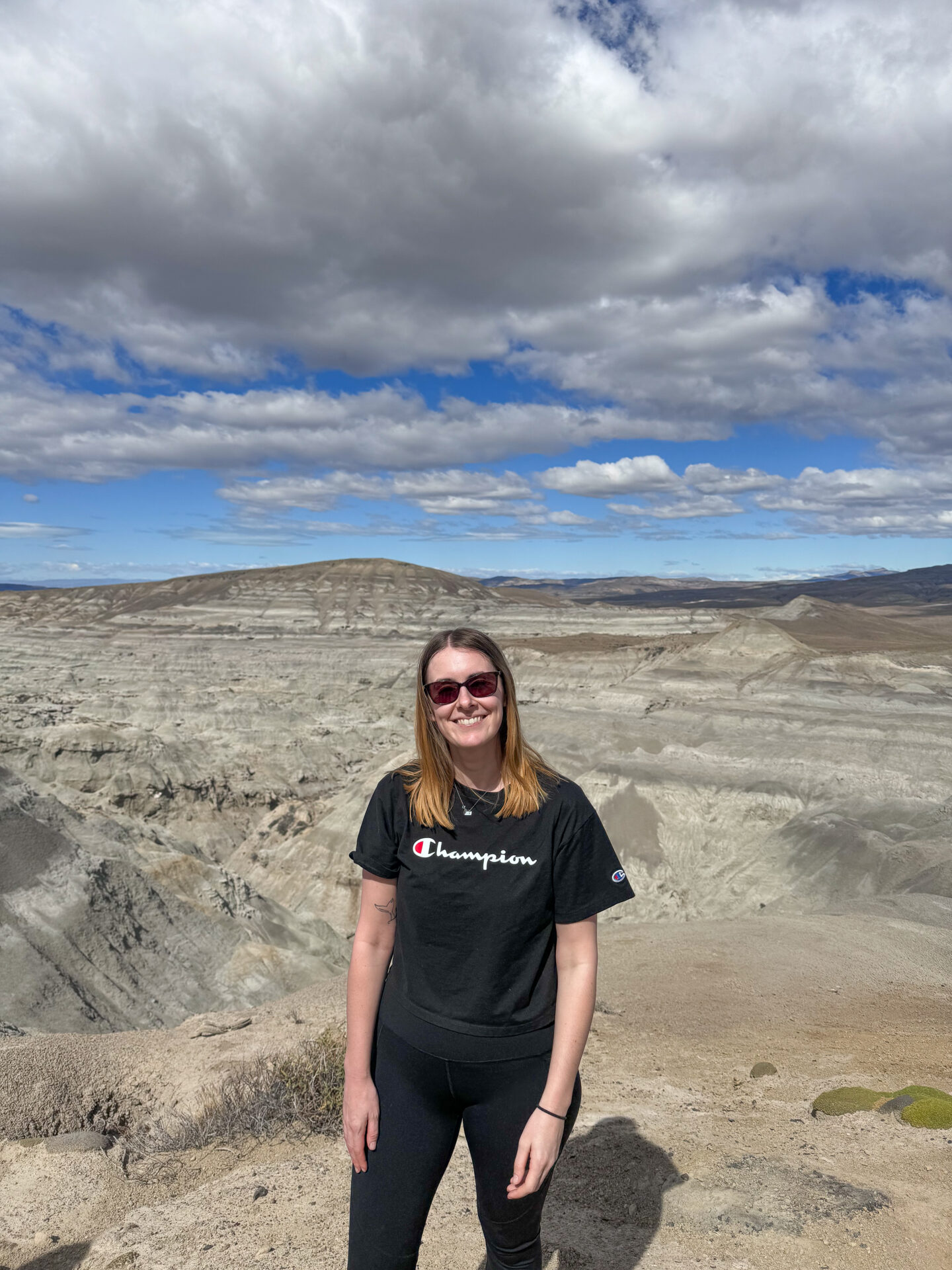
Choosing the right option for a day pack can sometimes be a bit of a mission. You want a comfortable bag that is also logistically simple when it comes to packing in general.
For longer hikes, I use my trusty Osprey 24-litre backpack. This is perfect for long hikes where I need to carry plenty of layers and essential items.
If you’re looking for a day pack for shorter hikes, the best option is a packable day pack. I swear by this Rohan packable bag. It’s perfect for hikes where you don’t need to carry as much. It also packs down into a small cube which is easy to fit into a big backpack or suitcase.
Having the right day pack might not seem like a big deal, but when you’re potentially walking for 10 hours per day, you want to be comfortable.
Rain cover
We’ve already covered packing a waterproof coat to keep you dry, but it’s also important to keep your backpack dry. One of the best ways to do this is to invest in a rain cover for your day pack.
I’ve been caught in heavy rains before without a rain cover and trust me, it’s not fun. If the rain is heavy enough, it can soak your backpack and get everything inside wet. This includes warm layers and potentially even items such as a camera or phone. You’re then left with a soaking wet bag that you somehow need to dry out.
These handy waterproof backpack covers are the perfect solution. They’ll keep your backpack dry and take up little room.
Cold weather protection
Depending on the time of year you visit Patagonia, it’s important to pack cold-weather items.
This includes the likes of a warm hat, gloves, a bluff and a warm jacket. I find down jackets are the perfect option. They are light, pack small, easy to layer and warm.
Even in the summer months, Patagonia can get cold. On my visit to El Chalten in February, I had to layer up for some of the hikes, especially when I reached higher elevations. The wind can be so strong and it has such a chill.
If you’re planning hikes at high altitudes such as Fitz Roy (Laguna de Los Tres) or Laguna Torre, be sure to pack protective items such as a warm hat and gloves. Gloves are also a requirement when trekking on the Perito Moreno Glacier.
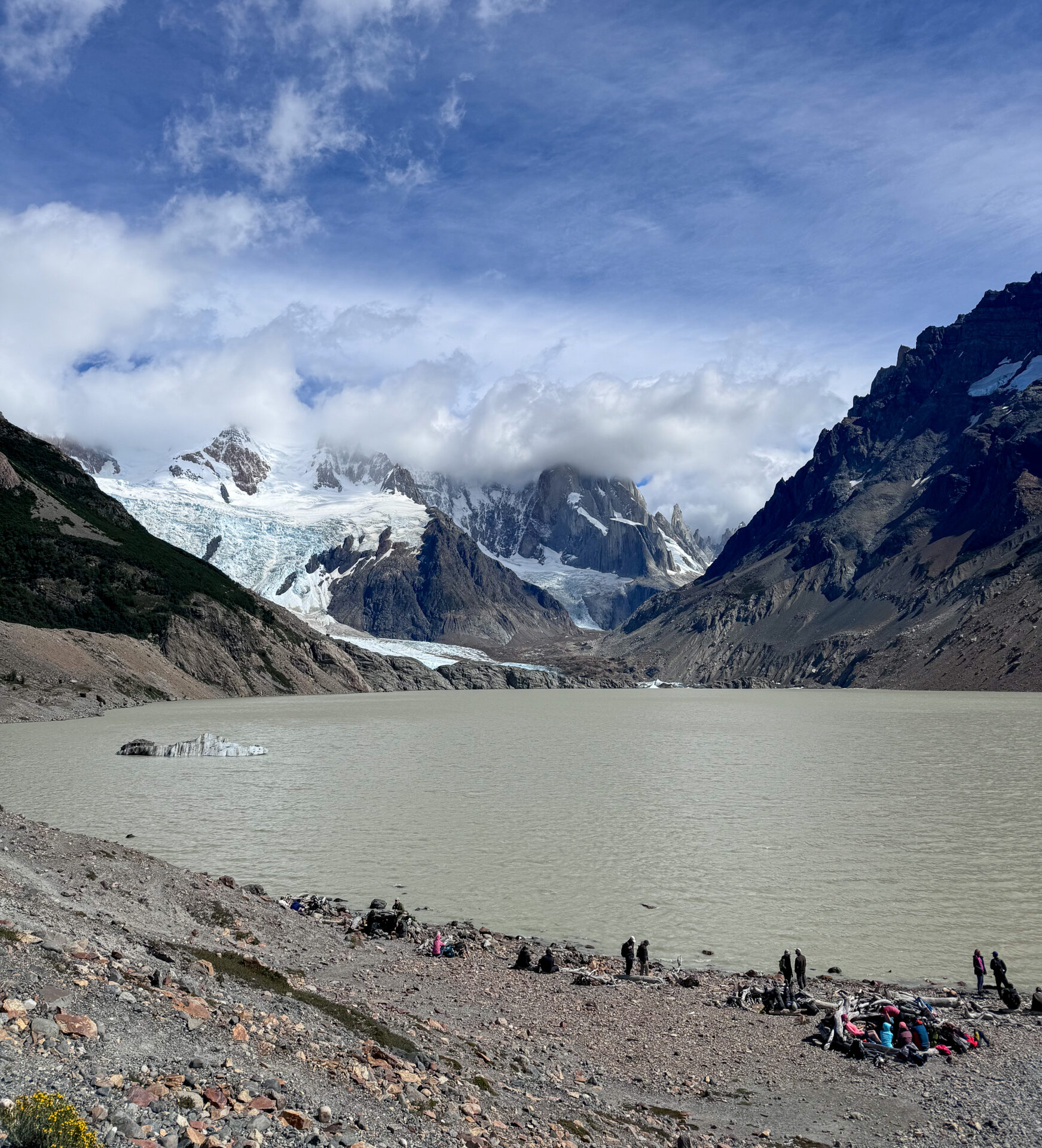
First aid kit
Many of the hikes in Patagonia are in remote regions with no facilities. There is often no phone service meaning you can’t call for help.
While most of the trails in Patagonia tend to be busy, I’d still suggest carrying a small first aid kit just in case. With rugged terrain and loose ground, it’s easy to take a tumble while hiking.
Carrying a first aid kit also provides protection if you develop a blister on a hike.
Cash
Patagonia is a remote and desolate area. In towns such as El Chalten, cash is the preferred option, and many places won’t accept credit cards.
This is why I recommend always carrying cash with you in Patagonia. (Side note: learn more about the best way to withdraw cash in Argentina in my Buenos Aires guide).
It’s also sensible to carry a small amount of cash with you on hikes. While there are no facilities to purchase anything, you never know when you might need some cash to hand. For example, you might find yourself needing to use a taxi to get back to your accommodation or buy some snacks/water on your way to and from the hike.
Walking poles
Whether to pack walking poles or not comes down to personal preference. If you’ve benefited from using them before, you’ll more than likely find them beneficial in Patagonia.
Many of the best hikes in Patagonia are long, over loose terrain and involve some steep sections. Walking poles can help take the pressure off your knees while also offering some extra balance support.
Of course, packing and carrying walking poles can be a hassle. If you need trekking poles when you’re there, you can hire them in towns such as Punta Arenas, El Chalten, and Puerto Natales.
Bug spray
It’s a sensible idea to carry bug spray with you while hiking in Patagonia, especially in the summer months. It’s not uncommon for the hiking trails to be swarmed by midgets that like to bite.
I didn’t have this issue when I visited in February, but another backpacker told me that they had been eaten alive in Torres del Paine.
If you’re like me and hate the idea of spraying Deet all over yourself, consider a natural option such as a citron body spray.
Snacks
Next up on this Patagonia packing list is arguably the most important item of all… SNACKS.
If you’re planning a long hike during your trip, you will no doubt need snacks. You can buy snacks in the nearby towns, but I personally didn’t find the selection great, and it was all very expensive.
If you love your snacks, consider bringing some with you from home. Especially the likes of granola bars and sweet treats.

Comfortable shoes
We’ve spoken a lot about the essential items to pack for hiking, but what about after you hike? If you’ve been on a long hike, your feet will no doubt be sore and aching. It’s likely that the last thing you will want to do is put on hiking shoes to walk around the towns.
I’d consider taking some comfortable shoes with you for the evening. Something like Teva sandals, flip-flops, or sliders are perfect. These allow your feet to breathe and recover, ready for the next hike.
Suitable socks
I never used to think too much about packing socks. I’d throw in whatever I had to hand and buy whatever was cheapest. I had to learn the hard way that wearing the right socks on long hikes is so important.
For those of you heading off on a big hike, make sure you have suitable and comfortable socks. Wool socks tend to be the best, with merino wool my personal favourite. It’s a thin material and helps to keep your feet warm without getting too sweaty.
Patagonia packing list: extra items
The items mentioned above are important items for any hiking trip to Patagonia. However, there are a few extra items to mention, especially for those doing multi-day hikes where it’s so important to have the right gear.
Dry bag
Depending on your plans, adding a waterproof bag to your packing list for Patagonia could be a sensible idea.
Dry bags come in different sizes and help keep valuables completely dry. If you plan to do water-based activities, such as kayaking or rafting, a dry bag is essential.
They’re not always the easiest to carry, so I don’t recommend using them as your main bag on long hikes. However, I normally carry a smaller one which fits nicely inside my day pack. This is where I keep valuables such as my camera, phone and wallet.
Camping equipment
For those planning a multi-day trek, you’ll need to think about your camping gear. This includes a sleeping bag, sleeping pad, tent and cooking gear.
If you’re planning popular overnight hikes such as the W Trek, many campsites have tents and camping equipment already set up for you. However, this isn’t true for all hikes. For example, in El Chalten, all overnight hikes require you to bring your own gear.
It’s possible to rent camping equipment in towns such as El Chalten, El Calafate and Puerto Natales.
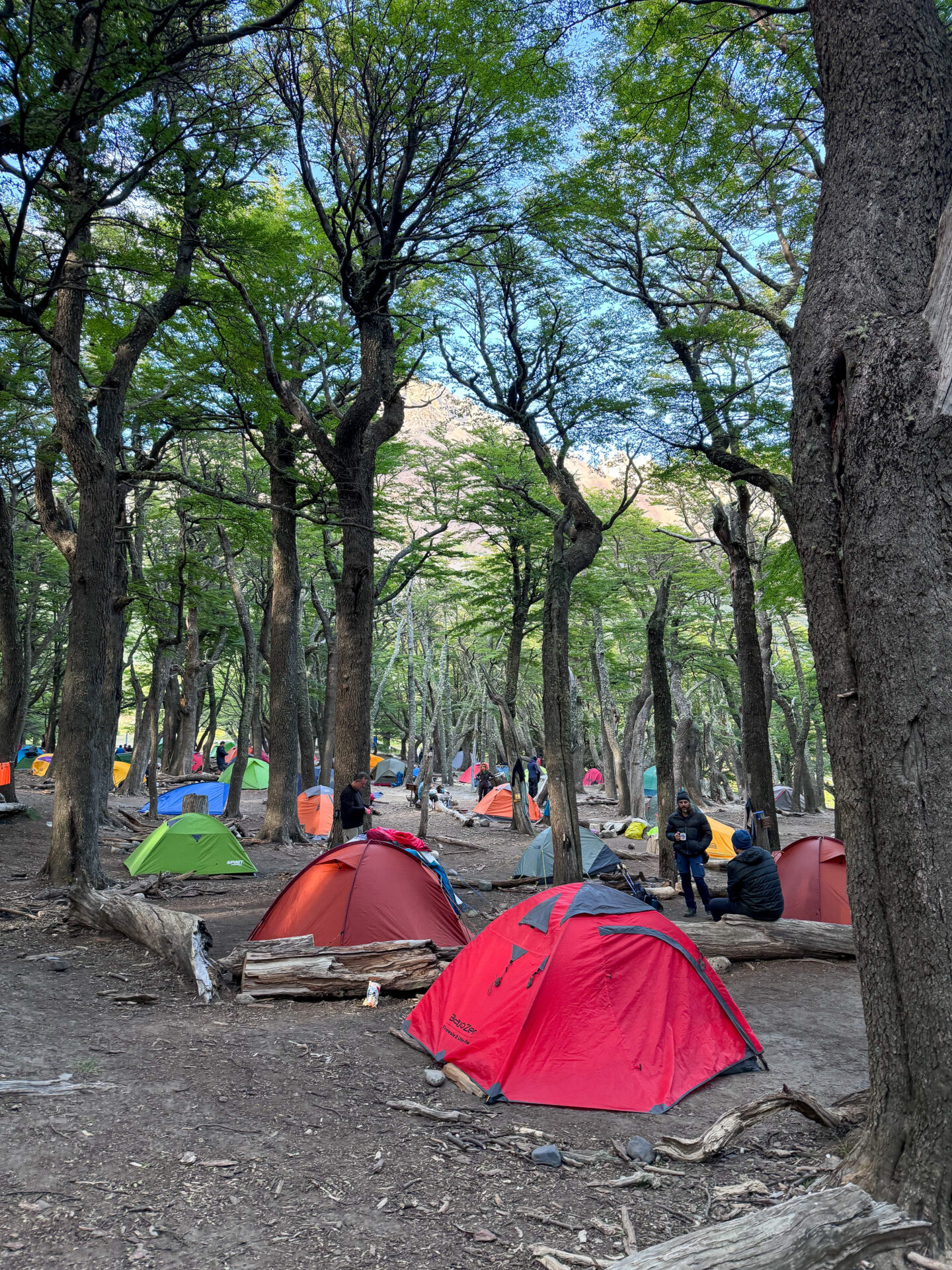
Toilet paper
The hiking trails in Patagonia have a distinct lack of toilets. If you do have the strength to use one of the few pit toilets, you still need to take your own toilet paper.
Tip: If you need to use a bush as a toilet, make sure you are a significant distance from any water source.
Portable charger
A portable charger may come in handy if you plan to do a long day hike or overnight hike. If you’re like me, you’ll be taking endless photos on your phone, using your phone to check the map and potentially even listening to a podcast or music.
This can drain a phone’s battery. Carrying a portable charger allows you to recharge your phone whenever you need it.
The main downside of carrying a portable charger is how heavy they are (although, there are some lighter ones on the market these days). However, having a usable phone is important on a hike, especially if hiking alone.
Reusable Tupperware and cutlery
Next on my Patagonia packing list are reusable tupperware and cutlery. It’s random, I know, but if you want to carry food with you, these will no doubt come in handy.
I try and go for collapsible tupperware to minimise the amount of space it uses up.
Small reusable or plastic bags
While I don’t like using plastic bags, they do occasionally come in use. Zip-lock bags are especially useful if you don’t have tupperware. You can use them to carry your sandwiches and snacks for the hikes. I also find they wash out quite easily, so they can be reused.
It’s also important to bring back any rubbish or garbage with you. This includes scraps of food or empty food packets (and toilet paper!). I always have a plastic bag in my day pack which I can throw any rubbish into.
Headtorch
For those planning an overnight hike, sunrise or sunset hike, remember to pack a headlamp or headtorch.
The trails in Patagonia have uneven terrain and there are steep drops in some areas. Carrying a headtorch means you can see where you’re going whilst still being able to use your hands.
Many of the campsites in Patagonia also don’t have lights, so a headtorch will no doubt come in handy.
Quick dry towel
If you’re backpacking and planning to stay in hostels or go camping in Patagonia, remember to pack a quick-dry towel, such as a microfibre towel.
Most of the hostels don’t supply towels or even have them available to rent. This means packing a towel is an essential item. Of course, if you’re staying in a nicer hotel and not planning to camp, packing a towel might not be necessary.
Waterproof pants/trousers
Similar to a waterproof jacket, waterproof pants can help to keep your lower half dry.
These won’t be essential for everyone as many hiking trousers are shower-proof and quick dry, but they could be useful for heavy rainstorms.
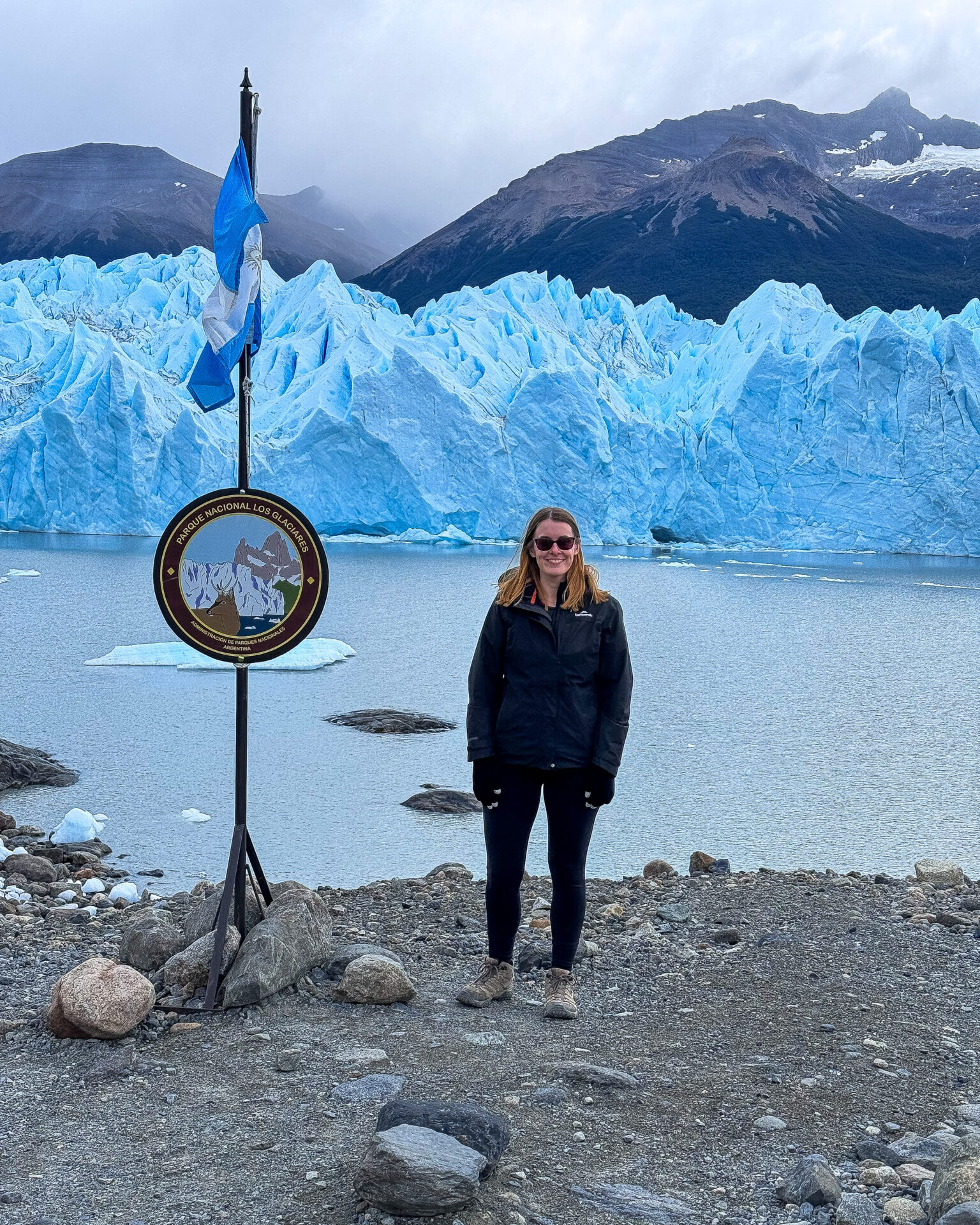
Electrolytes
Okay, a bit of a random one, but electrolytes are one of my essential packing items when going on a long hike.
Electrolytes help to keep you hydrated which is important when hiking. While it’s easy to keep guzzling water, sometimes your body needs a bit more than that.
I carry tablet-style ones that I can add to a litre of water. They’re perfect for carrying on hikes.
Water purification tablets
The tap water in Patagonia is generally safe to drink. Most mountain towns, such as El Chalten, get their tap water straight from the glaciers making it some of the freshest water.
Even on hikes, it’s possible to fill your water up from natural water sources such as glacial rivers.
However, if you’re planning a long hike or an overnight hike, it’s a sensible idea to carry water purification tablets (unless you have a water bottle that does that for you). Carrying enough water is near impossible, so you’ll no doubt need to refill your water at some point.
Several rivers close to the main hikes in Patagonia are said to be safe to drink from, but adding a water purification tablet is an extra way to ensure the water is clean.
Padlock
Patagonia is overall a very safe place to travel, even for solo female travellers. I spent three weeks travelling around Patagonia solo and had no issues whatsoever.
Even so, keeping your belongings safe is a must, especially when staying in hostels and dorm rooms.
Remember to include a padlock on your Patagonia packing list. Many of the hostels have lockers, so you can store your belongings there. Alternatively, you can keep your suitcase or backpack safely closed.
What to wear when hiking in Patagonia
Planning what to wear in Patagonia can be a headache. This is especially true for backpackers or those on longer trips visiting other destinations as well.
One thing I will say about hiking in Patagonia is that it’s important to be prepared. This doesn’t mean you need to purchase expensive hiking gear and spend all your money on items you might only use once, but it does mean you need to invest in some essentials. Sorry, but jeans or loose-flowing trousers and Converse are not going to cut it when it comes to hiking in Patagonia.
As a solo backpacker who spends her life living out of a 70L backpack, I understand the pain of trying to pack for every season and every eventuality. I also know how annoying it is to have to buy new gear on the road. I went from backpacking Southeast Asia to living in New Zealand to hiking the Annapurna Sanctuary in Nepal without returning home once.
If you’re visiting Patagonia and only planning one or two hikes, perhaps you don’t want to invest in loads of gear, and that’s completely understandable. So, what do you wear when visiting Patagonia?
I personally love hiking in leggings (my Sweaty Betty’s are a godsend). While walking trousers are a sensible option, leggings are more than sufficient. You don’t need to invest in proper trekking pants unless you find them more comfortable. Just make sure your leggings offer some protection from the elements.
Next, it’s sensible to have a sports top that’s not cotton. Hiking is a sweaty activity, and wearing cotton can be very uncomfortable. I suggest having a short-sleeved and a long-sleeved top.
Packing a fleece is a good idea for a warmer layer. This can be worn beneath your coat or waterproof jacket and adds an extra layer of warmth. I’d also suggest investing in a good down coat. The ideal down coat packs away small but also offers lots of protection.
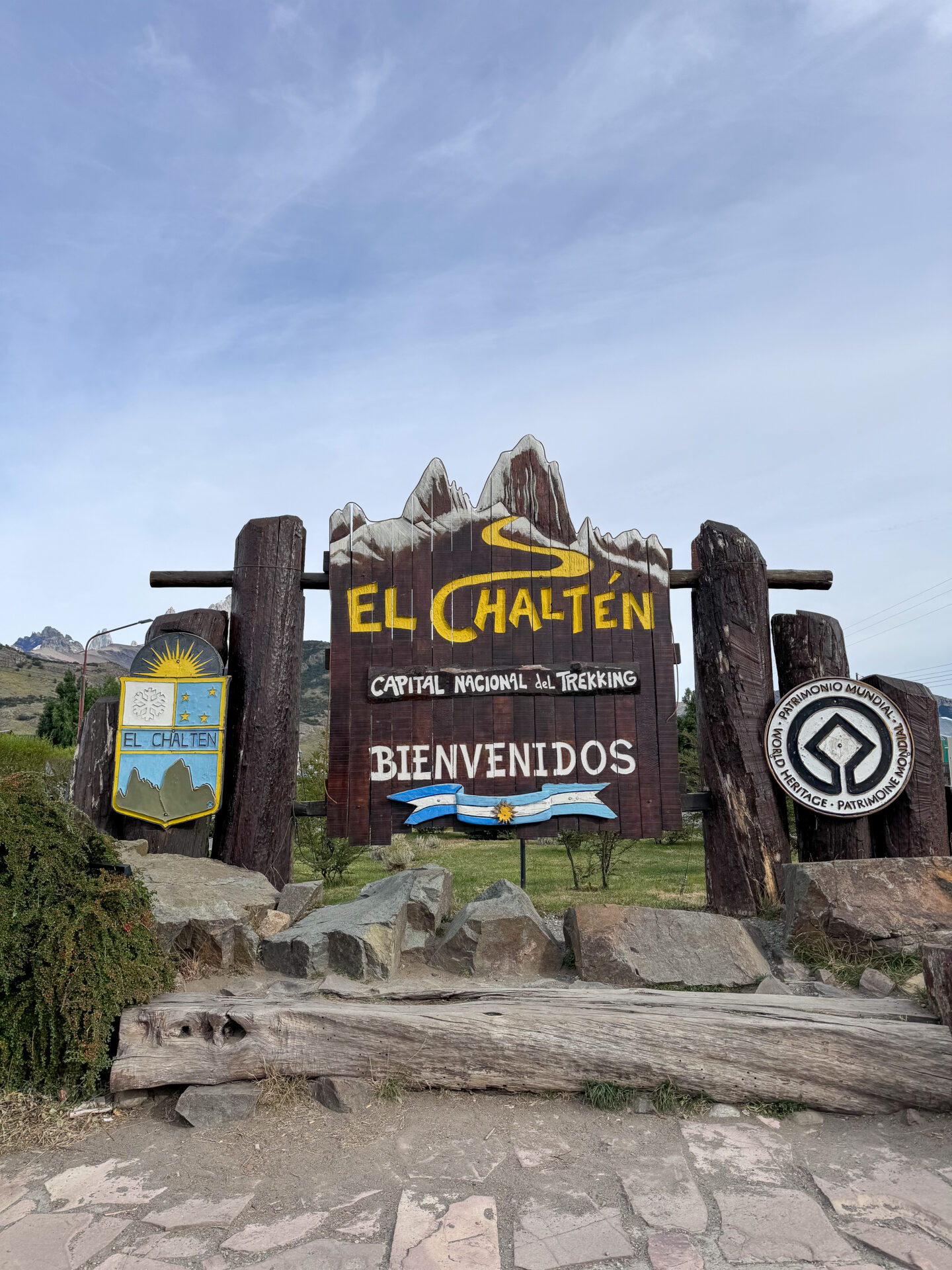
Last but by no means least… hiking boots! I hate carrying my hiking boots on backpacking trips. They take up so much room and are heavy to carry. However, hiking with trainers in Patagonia is not the best idea.
As I explained in the post above, many of the trails in El Chalten or Torres del Paine have loose and uneven ground. Trainers will not provide the grip and protection needed.
I know it can be annoying to carry extra gear or buy new clothes while backpacking, but I do think certain items are essential.
Where to buy last-minute essentials in Patagonia
Arrived in Patagonia and forgot something? Luckily, many of the towns in Argentina and Chile are catered towards visitors, especially hikers.
If you’re in Chile and have already left Santiago, the town of Puerto Natales has plenty of hiking shops. This is also the gateway to Torres del Paine National Park.
Over in Argentina, Buenos Aires is often the starting point for most trips and is filled with shops selling suitable items.
Once in Patagonia, the mountain towns of Bariloche, El Chalten and El Calafate are lined with shops selling outdoor gear. The same can be said for Ushuaia, which is close to the Southern tip of South America and near Tierra del Fuego.
I hope you have found this post about what to pack for Patagonia useful. Feel free to share it on social media or save the post for later.
Share this guide
